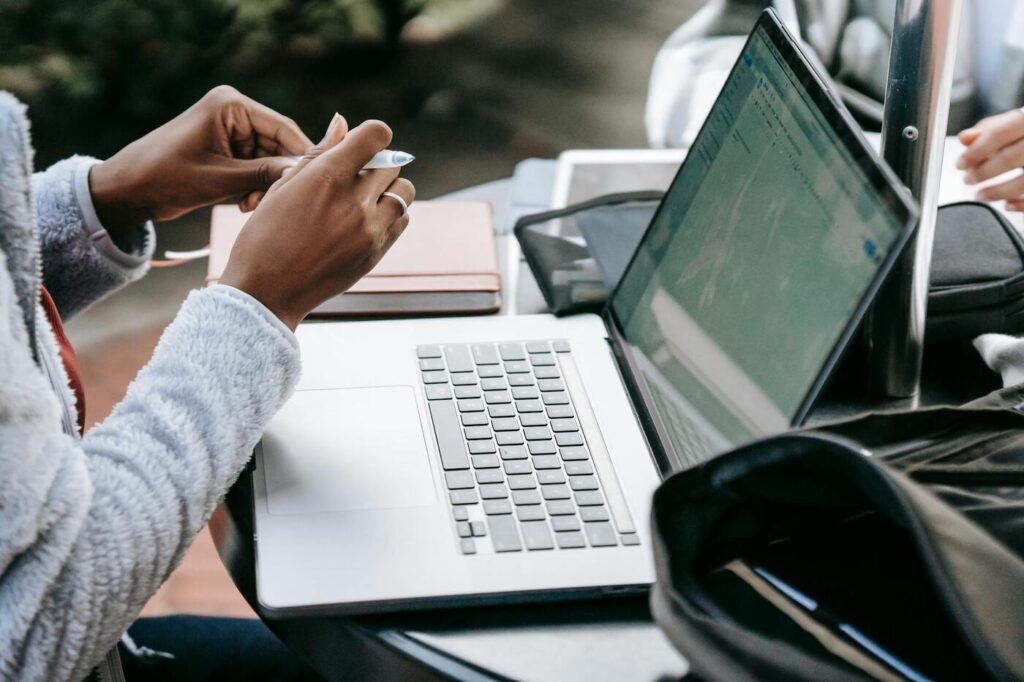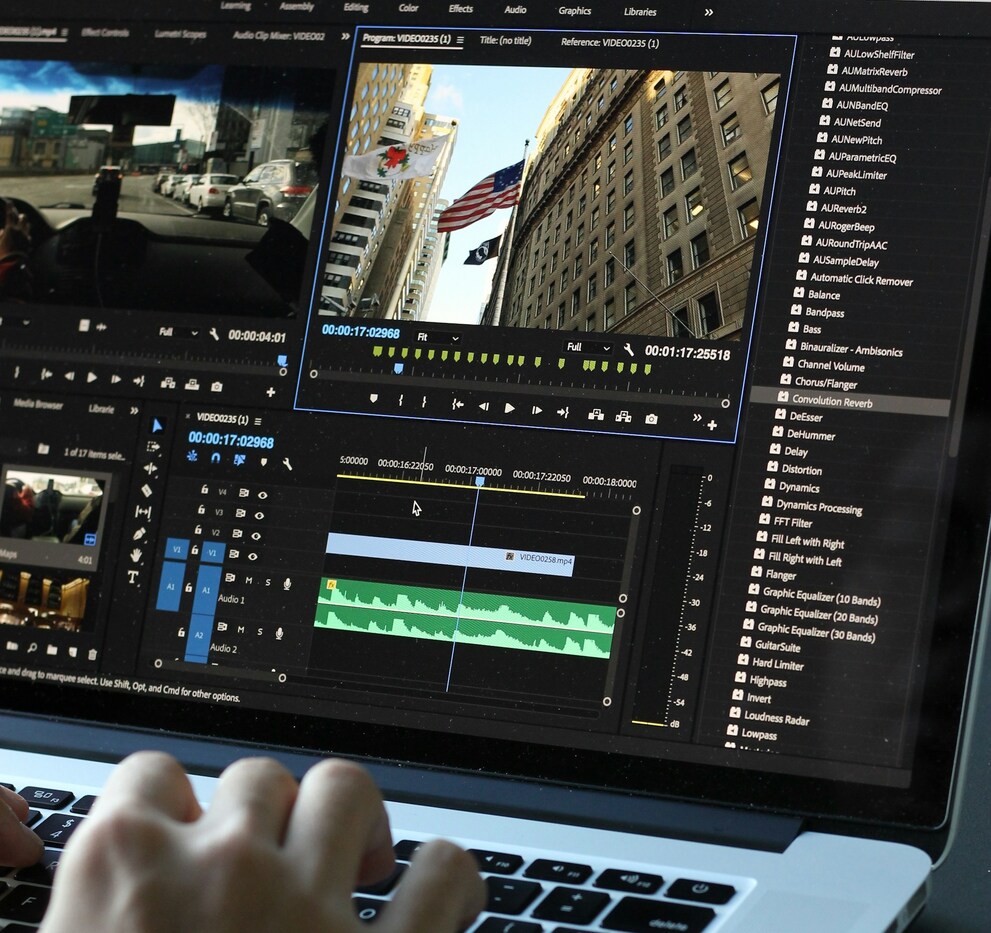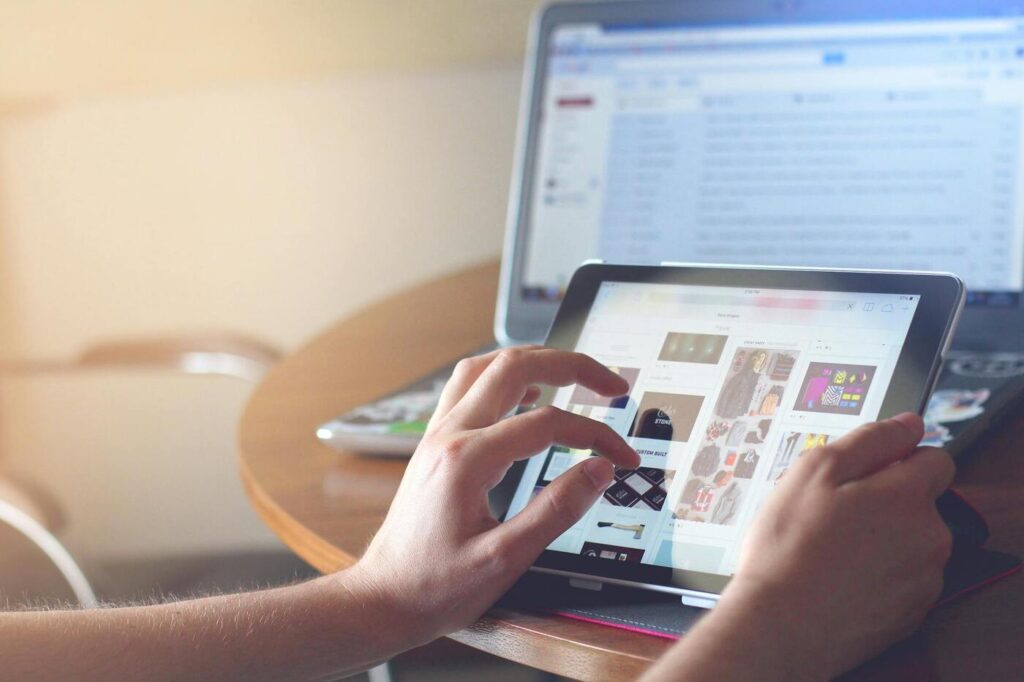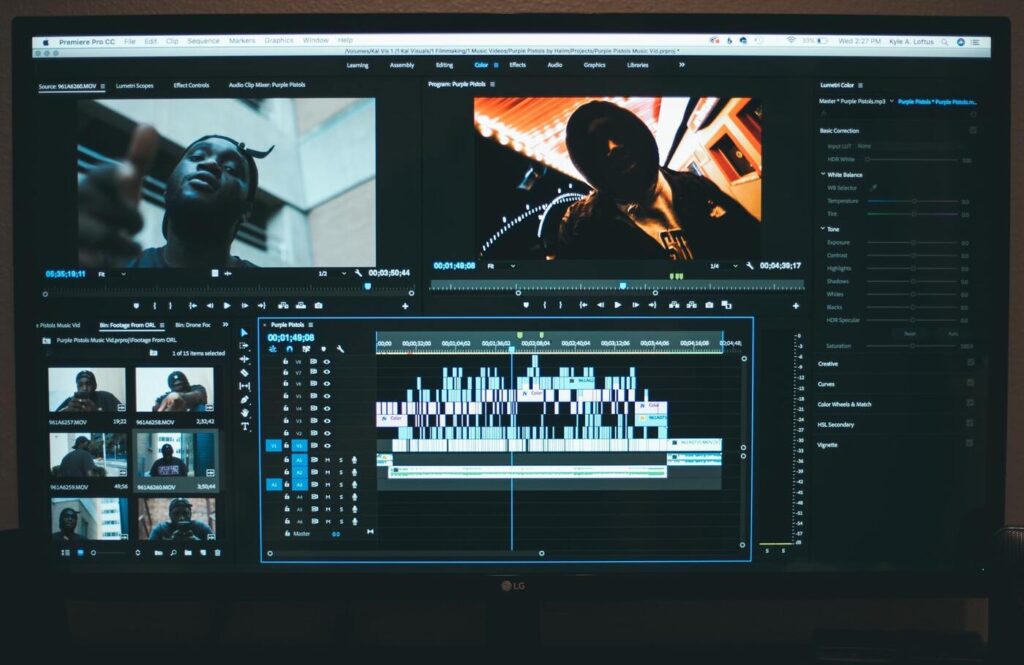
Multiple tabs, resized windows, and overlapping apps. These are constraints caused by limited screen area, leading to a mess on your display screen. On the other hand, more screen area translates into higher productivity. In the search for a second screen, you might be torn between a portable monitor and a tablet. How do you decide which is the better option?
A portable monitor is a dedicated second screen that extends your workspace, generally triumphing in screen size and resolution over a tablet. On the other hand, a tablet is an independent multifunctional device that can support various tasks like web browsing and media streaming.
With this TLDR, we’ll now look further into the differences so you can make an informed investment. Is a dedicated portable monitor really that different from a standalone tablet?
Portable Monitors vs Tablet: Comparing 5 Factors
Here is a brief decision-making process to help you decide between a portable monitor and a tablet.
Ultimately, the most important point of consideration is the nature of your work. What exactly are the tasks you’ll need your second display to do, and how will it enhance your productivity?
Go with a portable monitor if you need a second screen that is larger, better in resolution, or more budget-friendly. If you prefer the standalone nature and multifunctionality of a tablet and have a higher budget, invest in a tablet instead and simply use it as a second screen when you like.
Portable Monitors Offer More Screen Space
Both portable monitors and tablets come in a range of sizes – they cater to diverse preferences and needs. If productivity is the main purpose, I’d recommend at least a 13-inch display.
Generally, portable monitors offer more screen real estate than tablets. While portable monitors vary from compact 10-inch screens to larger 17-inch displays, tablets range from some as small as 7 inches to larger 13-inch or even 15-inch ones.
Obtain a portable monitor with a screen that is around the size of your laptop, and you can display them uniformly side by side – without the hassle of resizing windows to fit a smaller second display.
A good practice to gauge the screen size you need is to open up applications you would use on a day to day basis (e.g. spreadsheets, code files, designer tools, PDF documents, etc.), and display each application at an optimal size on your current desktop. Measure how large it should be at full-width. Gauge the screen space that your programs actually use and whether you may end up scrolling on your second display. If your second screen is too small, you may waste time scrolling, resizing windows, struggling with side menus, and so on. Smaller screens could cause you to squint, posing potential vision issues in the long run.

Portable Monitors Offer Better Display Resolutions (Often Full HD)
Resolution plays a significant role in the quality of your viewing experience. Higher-quality displays will be less taxing on your eyes. Generally, a resolution of 1920 x 1080 pixels (Full HD) provides sharp visuals without straining the eyes
Portable monitors tend to offer a higher resolution compared to tablets. Most portable monitors provide Full HD (1920 x 1080 pixels) or higher resolutions, ensuring sharp and detailed visuals. Tablets, while some offer high-resolution displays, may not consistently match the resolution of portable monitors.
Opt for portable monitors or tablets with higher resolutions, unless you are simply using your tablet for casual reading, entertainment, or impromptu meetings.
Tablets Can Function As Standalone Devices
The advantage of a tablet is that it can provide a singular context for your work. A tablet – with the applications you have installed in it – can function as a standalone device (separate from your main desktop) rather than as a second screen (an extension of your desktop).
Obviously, this means that your tablet can function entirely on its own, unlike a portable monitor which functions only as a second screen. When you are working on your main tasks on your computer, you can use your tablet separately for research, learning, planning, or drafting ideas. You can choose to use your tablet in a focused manner and away from your main desk.

Therefore, a tablet can be really useful for ‘secondary’ tasks that complement your work, even though it is a smaller display. A tablet is thus useful, versatile, and less limiting as a second device.
Tablets Are Smaller And Lighter, Thus More Portable
While both tablets and portable monitors are designed for portability, there are differences in their extent of portability. This is a significant consideration since the weight of items does add up in your bag.
Tablets are generally smaller, lighter, and are easy to carry in a bag or even by hand.
In contrast, portable monitors are typically slightly bulkier and heavier due to the additional components required for display purposes.
A portable monitor weighing two or three pounds may sound negligible, but if you tend to travel on foot for a long distance, your portable monitor would weigh quite heavily on your back. Consider that you’d usually carry your laptop as well – unless you are simply connecting your smartphone to your monitor. Some people would carry additional items such as a keyboard or laptop stand.
Tablets Are More Costly Than Portable Monitors
Portable monitors are generally more budget-friendly, with options available at various price points to suit different budgets. You can find quality portable monitors that are as budget-friendly as $100, while premium ones can go up to $300-$500.
Without doubt, tablets are more expensive than portable monitors. Consider that the better tablets for productivity (with larger screens and higher resolutions) tend to cost more than a few hundred dollars – here is a guide. Tablets generally cost more as their screens get larger.
In fact, the newest versions of the Apple iPad Pro can amount to nearly $1,000. The prices of its accessories add up (e.g. Apple Pencil, Magic Keyboard). In the end, a tablet setup may cost nearly as much as a cheaper laptop.
This article was originally published on unboundist.com. If it is now published on any other site, it was done without permission from the copyright owner.
Can a tablet be used as a portable monitor?
Can you simply use a tablet as a portable monitor? While it is possible to use a tablet as a second display for your laptop or computer, there are some caveats to consider.
In reality, while a tablet offers benefits beyond those of a monitor, such as wireless connectivity and web browsing, it is not purpose-built as a monitor. For instance, its screen size and resolution may not suffice for a productivity-oriented setup.

This comes back to the nature of your work, and whether you are working on processor-intensive tasks and applications. These tasks demand high processing speed and computing capacities that a tablet is likely unable to provide. Certain professions deal with highly specialized tasks, such as video editing, compiling programs, and scientific modeling, will not suit a tablet. Such work will almost always better suit a high-resolution portable monitor or regular monitor.
On the other hand, if you are working on everyday office tasks, you may find a portable monitor redundant. This is particularly the case since the integrated, cloud-native collaboration apps we commonly use for work – such as Google Suite, Microsoft Office, and other collaboration tools – have app versions available. Instead of requiring a larger second display, you can simply run them on an existing tablet you own (in conjunction with your laptop); there’s no need to drag windows across different screens or resize them when using these cloud apps.
Other Drawbacks: Portable monitor vs Tablet
Here are some more considerations when it comes to practicality and preferences.
If in theory, using a portable monitor as a second screen sounds like a smart and enticing idea, you may find reality different when you try it. Here are two drawbacks:
- Depending on where you execute your digital grind, space may or may not be limited. In some cafes, especially during more crowded times, there may not be sufficient desk space to set your portable monitor alongside your main laptop. Even if there is, maximizing comfort or ergonomics is likely tough; there may be no space for an external keyboard or laptop stand.
- Portable monitors draw more attention. You may have to put up with the stares and glances of curious passersby or members of that place — setting up two display screens in public draws some degree of unwanted attention. You may not like the attention.
So if you are still undecided (50-50) on a portable monitor or tablet, these considerations may make you lean towards using a tablet for remote work or traveling.
Alternatives
We have covered the pros and cons of using portable monitors and tablets as a second screen. Yet, you may not be convinced of either option. The good news is there are other cheap ways to maximize screen space without spending much money. These methods include using virtual desktops, windows management tools, and even using your phone wisely – all without additional hardware that you don’t already own.
Related: Monitor Alternatives for Your Budget and Desk Space
If you are traveling and working remotely, one alternative is to buy a cheap normal monitor for temporary use during your trip, and sell it locally afterward.
You could also find coworking spaces with the multi-monitor desk setups that you need, especially if you work on complex tasks that must use the extra screen real estate.
Lastly, you can consider plugging your laptop into the TV of your hotel or Airbnb, if you are only going to be on a short trip. The screen resolution of your TV and viewing ergonomics may not be ideal, but it may be fine to tolerate these inconveniences for a few days.
Conclusion
In summary, the nature of your work, alongside other considerations such as budget, preferences, and practicality, is key to deciding what second screen works best for you.
Both a portable monitor and tablet can help with productivity, but neither screen is perfect. Both devices serve different purposes.
To reiterate, a portable monitor has a specific use case of serving as a second screen, while a tablet has more uses, features, and functionality as a device on its own. If you enjoy using a tablet and it adequately supports your work tasks, a tablet is a great option. Ensure you do not need to run processor-intensive or larger-width programs or apps that require a large screen. A tablet works well for ‘secondary’ tasks that complement your workflow, such as reading, learning, and writing.
If you need a larger screen given the demands of your work, consider portable monitors. Make sure to check the resolution and display brightness to ensure that working on highly detailed tasks is sustainable and comfortable. Be prepared to manage the disadvantages of carrying a portable monitor around – and you will be all set.